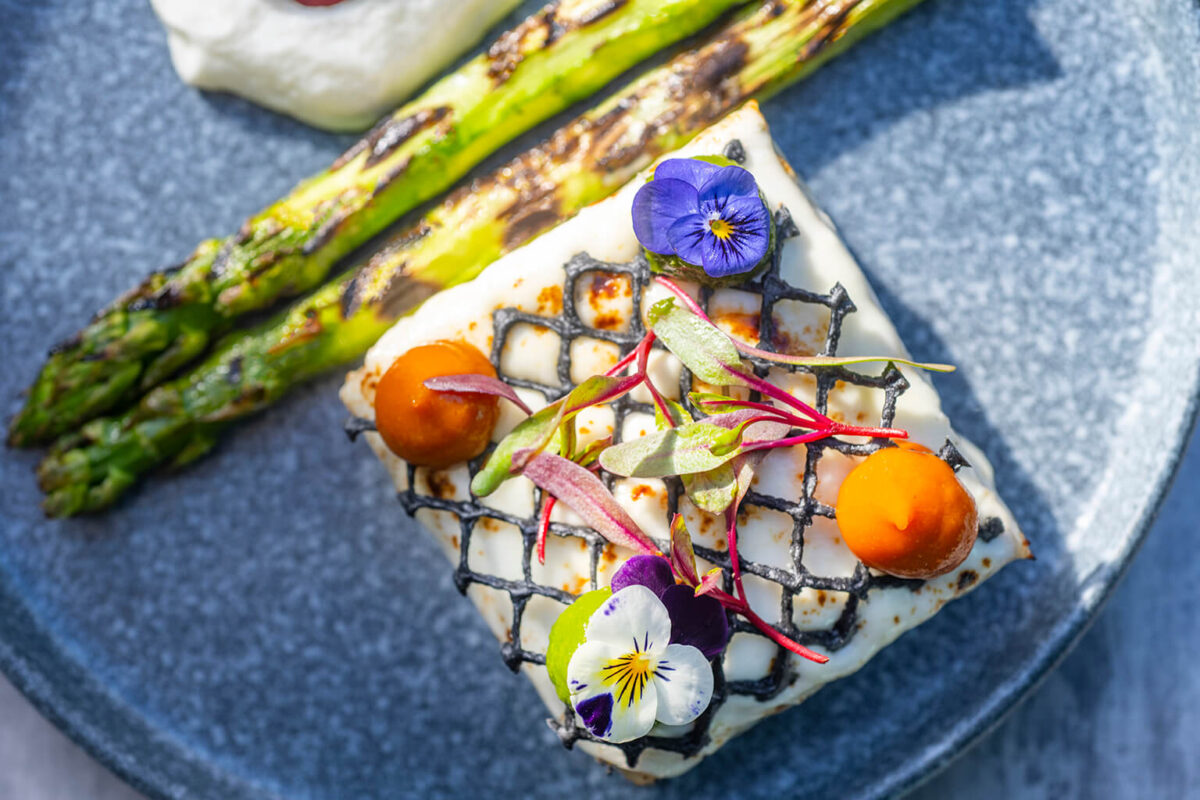Words by Sharon McDonnell
For a culinary tour through India that will tantalize your taste buds with layers of spices and surprise you with unexpected ingredients like oysters, asparagus and burrata, there’s no need to leave the Peninsula.
At ROOH in Palo Alto, the goal is “to change your perception of Indian food and also show strong women in India,” says Anu Bhambri, who owns the restaurant with husband Vikram Bhambri.
The couple loves to eat out, but when they returned from frequent visits to their homeland, they were dismayed that Indian restaurants in the U.S. seemed to lag years behind. “About 20 years behind,” according to Anu.
“We want to show the exciting diversity of food of contemporary India,” she says. So instead of serving just north Indian or south Indian food, ROOH showcases the stunning variety of regional dishes, from Mumbai to Goa, Hyderabad to Gujarat.
The initial menu was cooked up by Sujan Sarkar, second-place winner of Food Network’s Chopped and Times of India’s 2016 “Chef of the Year.” ROOH’s current executive chef is Apurva Panchal, a former chef de cuisine at Taj Mahal Palace hotel in Mumbai who’s cooked for former President Barack Obama.
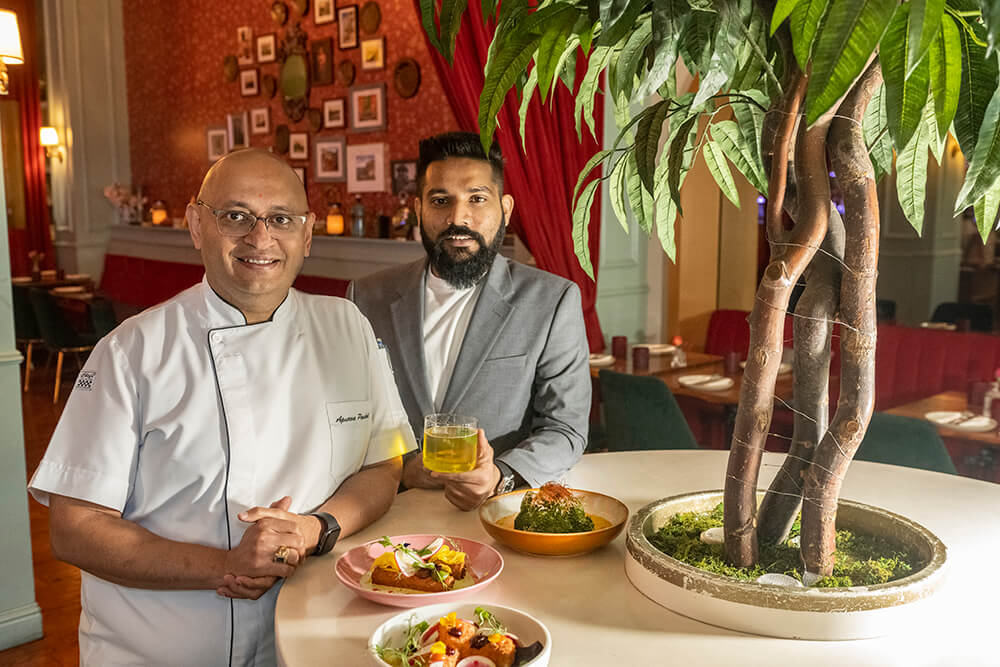
A must-order on the small plates menu is dahi puri, six fried semolina puffs with avocado, tamarind and onion, topped with yogurt mousse and raspberry pieces. Tangy, creamy, sweet and spicy, it’s an irresistible street food in Mumbai. “I lived on dahi puri in India,” says Anu, who recalls her mother making it. “I’d eat it every day.”
While pork isn’t often on the menu in Indian restaurants, ROOH’s small plates include barbecue pork ribs with pomegranate sauce, as well as duck seekh kebabs with mixed berry chutney and potato tikki chaat, a crunchy fritter. For a strong starter, try the barbecue oysters, topped with melted Amul cheese, a cult favorite in India that’s made from buffalo milk in Gujarat.
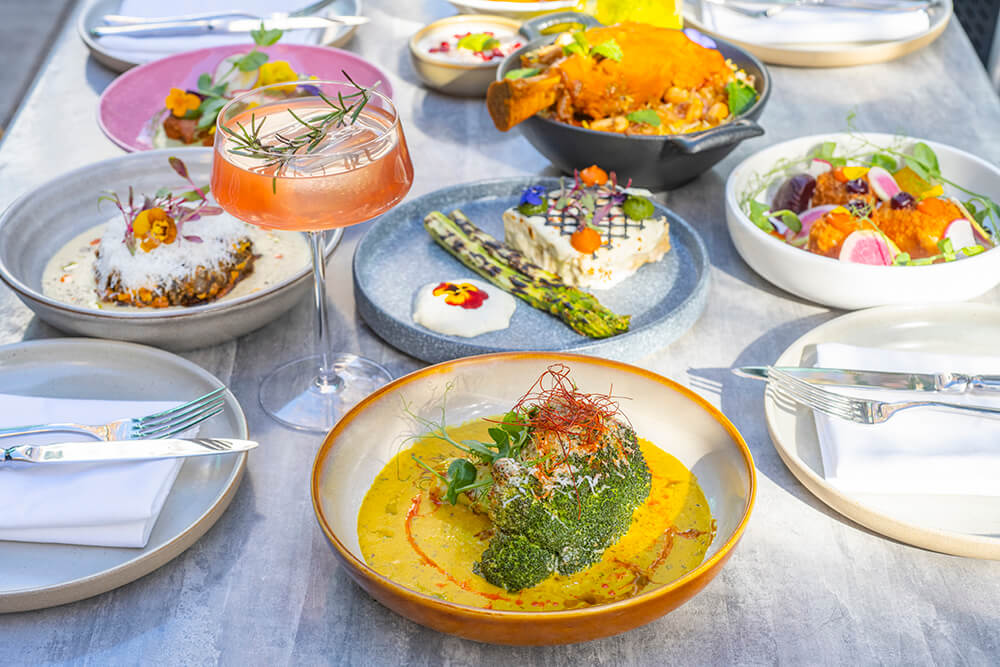
Entrees range from a tandoori portobello mushroom with popcorn sauce to soya chaap curry featuring meat-like soybean nuggets and vegetables in a creamy yogurt-based turmeric sauce, to pistachio chicken sheekh with almond sauce and beetroot. Desserts include a version of tres leches cake with mango, coconut mousse and jelly.
Bar manager Roger Gomez created the cocktail menu, using a flavor wheel that helpfully groups drinks and their ingredients by the six ayurvedic tastes: sour, sweet, pungent, bitter, salty and astringent. The Mumbai-born Gomez offers a Vasco Hi Ball that contains feni, a spirit distilled from cashew apples that’s made only in Goa. Mango puree, melon, makrut lime, vodka and egg white star in his Ratnagiri, named for an Indian city famous for Alphonso mangoes.
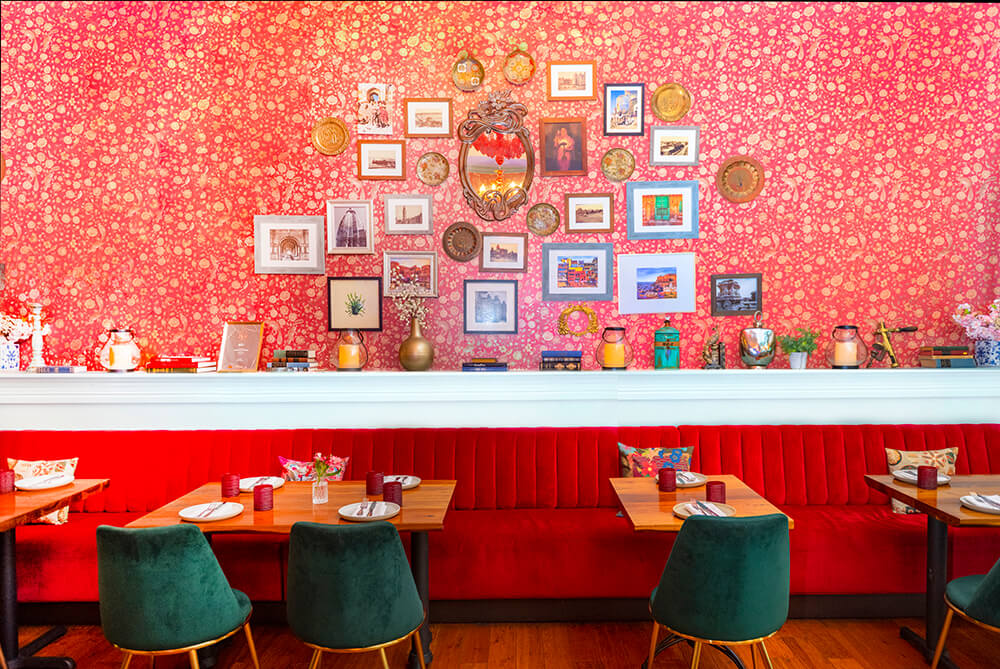
Anu and Vikram had 25 years of combined experience working for Microsoft before they started Good Times Restaurants group with chef Sujan. (Fittingly, when asked to name his favorite cookbook, Sujan cites Modernist Cuisine by Nathan Myhrvold, Microsoft’s first chief technology officer.) Anu acts as chief operating officer, while Vikram handles expansion, finance and legal matters.
When the couple wanted to open ROOH in SoMa in 2017, their San Francisco landlord was reluctant to lease to them because the pair had no experience owning a U.S. restaurant—so they flew his manager and a consultant to see their family’s restaurants in India. “They were totally blown away by what we do,” Anu beams.
San Francisco’s ROOH went on to earn a Michelin star, and was followed by locations in New Delhi and Columbus, Ohio, with the Palo Alto restaurant opening in early 2020.
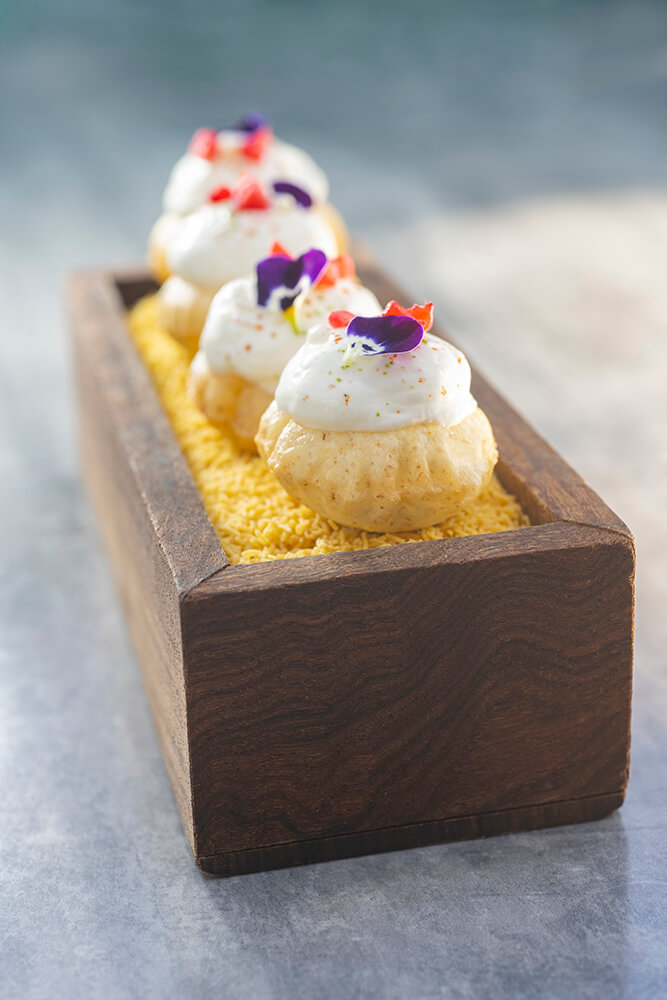
“My parents thought I was crazy to leave tech,” Anu smiles. But their years at Microsoft powerfully influenced the couple, from their restaurant website featuring alluring photos and customer reviews to measuring performance with KPIs (key performance indicators) for everything from the cost of ingredients to identifying trends among best-selling items.
Learn fast, fail fast and adapt to change are all lessons learned from their time working in tech, she says. “We constantly change our menus: every three to four months, we add several dishes, and every six months, we do a major overhaul. We keep things interesting, so guests don’t know what to expect.”
Their exuberant decor matches this mantra. Jewel-like colors adorn ROOH’s living room-like interior, from emerald chairs to ruby red velvet banquettes accented with patterned pillows. The maroon-patterned walls hold photographs of India and a 16-foot-long mural of a modern Indian woman adorned with jewelry and flowers. Two faux mango trees stand right inside the doors, just like the front porch of an Indian house, says Anu.
With a name that means “soul” or “spirit” in Hindi, warm and vibrant ROOH keeps Palo Alto diners coming back for more.


